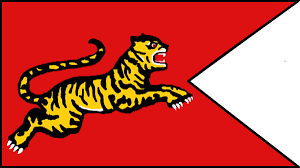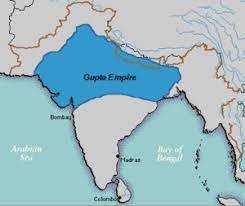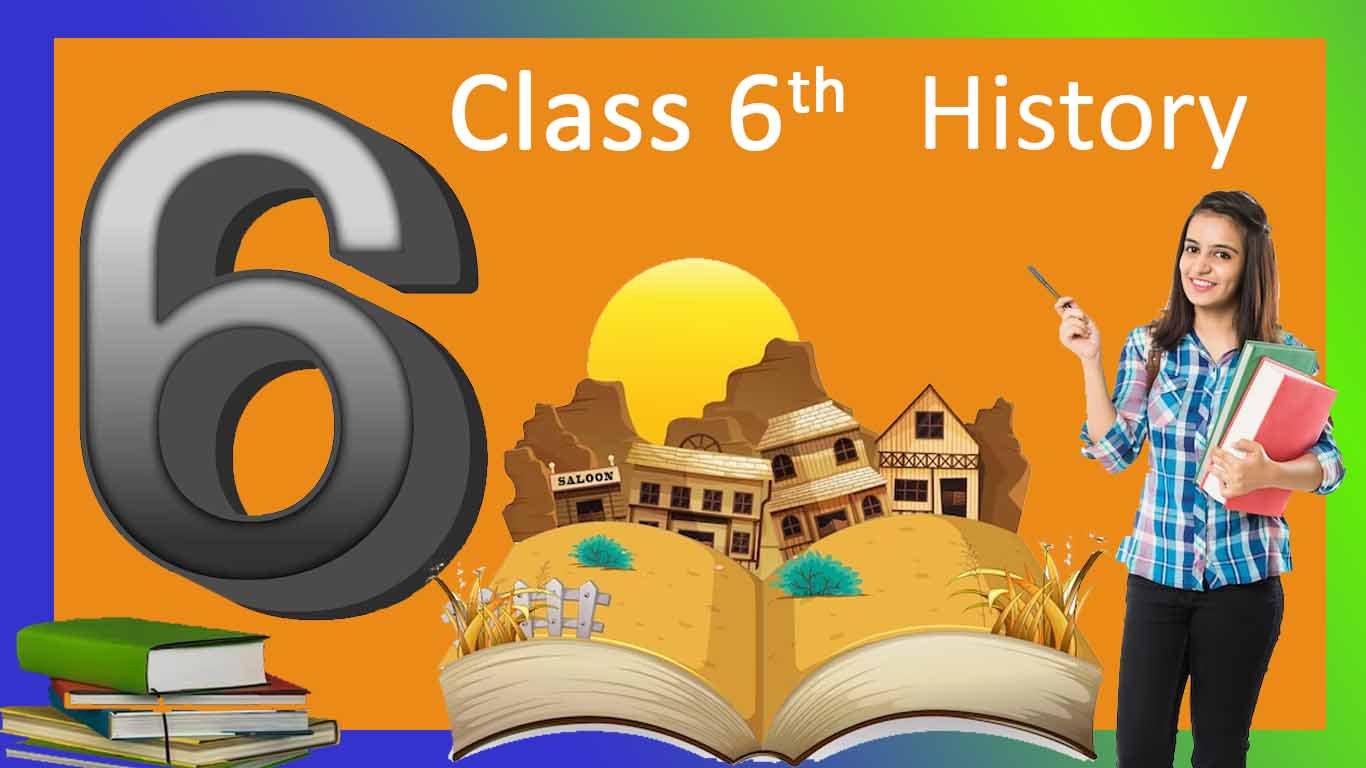Access comprehensive question and answer solutions for Class 6 History book, covering important topics and events. Our expertly curated resource provides detailed explanations and insights to help students grasp key historical concepts. From ancient civilizations to medieval times, explore the rich tapestry of human history with our Class 6 History book question answer guide.
Enhance your understanding of significant events, prominent personalities, and cultural developments through our meticulously crafted solutions. With engaging content and interactive exercises, our question answer guide promotes critical thinking and historical analysis skills. Whether you’re preparing for exams or seeking additional practice, our reliable and comprehensive resource is here to support your learning journey. Dive into the captivating world of history and unravel the mysteries of the past with our Class 6 History book question answer guide.
For more details about computer related topics click given link भारतीय इतिहास का परिचय INTRODUCTION OF INDIAN HISTORY
Ch 10 The Post Mauryan Period
Short answer type question (Class 6 History)

Ques 1 : Write about Cholas.
Answer : The Cholas ruled in the Kaveri delta with their capital at Uraiyur. Kaveripattinam was their chief port. The most famous of the Chola kings was Karikala Chola.
Ques 2 : Write a few lines on the Pandyas.
Answer : The Pandyas ruled over Madurai and parts of Tirunelveli with their capital at Madurai. Their chief port was at Korkai. The most famous of the Pandyan kings was Neduncheziyan. He was a great patron of art and literature. The Pandyan kingdom was famous for its pearls.
Ques 3 : Why was the silk route called so?
Answer : The Silk Route was called so because silk was the main item of trade on this route. It was a highly valued commodity.
Ques 4 : What were the reason for the Chinese pilgrims to come in India?
Answer : Chinese pilgrims came to India to study Buddhism, to visit places associated with the Buddha and to collect Buddhist texts.
Long Answer type Questions. (Class 6 History)
Ques 2 : Write about The Satavahanas.
Answer : The Satavahana rulers were refered to as the ‘Lords of the Dakshinapatha’ which means ‘the route leading to the south’. Women enjoyed a vital position in the society. They had flourishing internal and external trade. They worshipped Hindu gods. They constructed many rock-cut temples and monasteries in Maharashtra.
Ques 4 : Write about the Indo-Greeks.
Answer : The first among the ruling dynasties of the north were the Indo-Greeks or the Bactrians. The rulers of Bactria (Bactra) and Parthia became almost completely independent by 2nd century BCE with the decline of Seleucid power. They brought parts of northwestern India under their control.
The most famous of the Bactrian kings was Menander or Milinda (166–150 BCE). He converted to Buddhism. A number of Indo-Greek coins have been found which bear the portraits of the kings and also carry inscriptions in both Greek and Kharosthi scripts.
Ch 11 New Empires and Kingdoms
Short answer type question (Class 6 History)

Ques 1 : Why is the Gupta period referred to as the Golden Age ?
Answer : The Gupta period is often referred to as the Golden Age as this period saw a number of developments and achievements in the fields such as art, science, literature, technology, etc.
Ques 2 : Write short note on Chandragupta.
Answer : The first important ruler of the Gupta dynasty was Chandragupta I who came to power in 320 CE. He married Kumaradevi, a Lichchhavi princess, who helped him increase his territory and power. He ruled over Magadha, Saketa and Prayag from Pataliputra. He assumed the title of Maharajadhiraja. He ruled for some 15 years and was succeeded by his son Samudragupta in 335 CE.
Ques 4 What do we get to know from prashati of Samudragupta.
Answer : The main source of information about him comes from the Allahabad pillar inscription, the Prayag Prashasti. It was a eulogy composed by his court poet Harisena. This inscription is a poem written in Sanskrit. The term prashasti is a Sanskrit word which means ‘in praise of ’.
The Allahabad pillar inscription by Harisena mentions the various achievements of King Samudragupta. He has been highly praised in this inscription as not only a great warrior but also a patron of art and literature, a great musician and a poet.
Ques 5 why was the agriculture the main source of income during the Gupta period?
Answer : Agriculture was the main source of income as most of the revenue came from land.
Long answers type question (Class 6 History)
Ques 1 Write a note on the Chalukyas?
Answer : The Chalukyan dynasty rose in 543 CE under Pulakesin I. He gained control over Vatapi in Karnataka and made it his capital. The most famous Chalukyan ruler was Pulakesin II. His empire extended over most of the areas of Karnataka, Andhra Pradesh and Telangana. We get information about him and his reign from a prashasti known as the Aihole inscription written by his court poet, Ravikirti.
This inscription mentions his ancestors. It describes how Pulakesin II defeated Harsha and his army and thus stopped Harsha’s advances in the south. It speaks of the victory of Pulakesin II over the Pallava king Mahendravarman I
Pulakesin II sent an emissary to the court of the king of Persia, which strengthened the ties of friendship
between the two kingdoms. Hiuen Tsang visited the Chalukyan kingdom and was greatly impressed by it.
Ques 3 Write about the samantas?
Answer : Military leaders were known as samantas. They provided armed troops to the king for which they received land grants as payments. The revenues they received from the land was like salary. It also aided them financially to care for their weapons and cavalry. Many of the samantas sought to be independent when they found the king growing weak in administration.
Ques 3 Write a note on the life of the people during the Gupta period?
Answer : The account by Fa-Hien mentions the following things about the life of the people in the Gupta period.
• The people were honest and simple and led happy, secure and prosperous lives.
• Crime was rare and punishments were not very severe.
• There were not too many restrictions and people were allowed considerable freedom.
• People did not have to pay too many taxes.
• He also mentions that there were many charitable institutions and rest houses.
• At the same time, he also noticed the plight of the untouchables, who had to live on the outskirts of the city.
Ch 12 Culture and Science
Short answers type question (Class 6 History)
Ques1 Write a note on any one of the epics.
Answer : Mahabharata, written by Ved Vyasa, comprises over 100000 verses. It is the longest poem in the world literature. The story is about a war fought between the Pandavas and the Kauravas, who were cousins.
The Bhagavad Gita, the sacred text of the Hindus, which is in the form of a dialogue between Lord Krishna (an avatar of Lord Vishnu) and Arjuna, is also included in Mahabharata. Dharma (the path of truth or righteousness) is the main message of this epic.
Ques 2 Mention some important works of Kalidasa.
Answer : Abhijnanashakuntalam, Malavikagnimitram, Vikramorvashiyam, Raghuvamsa, etc. were some of the famous works of Kalidasa.
Ques 3 : Who was the Aryabhatta ? Write a note on him.
Answer : Aryabhatta was a famous mathematician and astronomer. He wrote a book, the Aryabhatiya in Sanskrit. In it, he mentioned that the Earth moves around the Sun, as well as on its axis, and that the rotation of the Earth on its axis caused day and night. He also found the method of calculating the circumference of a
circle.
Ques 5 : Why was it expensive to build temples?
Answer : Building temples would have been an expensive affair as it required skilled labour, materials and money.
Long answers type question (Class 6 History)
Ques 3 : What were the significant contributions in the field of medicine?
Answer : Charaka and Sushruta made important contributions in the field of medicine. Charaka wrote the Charaka Samhita which is a work on Ayurveda. His book also mentions the methods of treatment of various diseases. Sushruta was a famous physician. He wrote a book named Sushruta Samhita on surgery. He talks about cosmetic surgery in this book.
Ques 4 : What are stupas? Write a note on the architecture of the stupas.
Answer : Stupas are dome-shaped structures which contain the relics of Buddha or Buddhist monks. A small box which contains the relics is placed in the centre or the inner chamber of the stupa. This may contain the bodily remains, such as bones, teeth or ashes of Buddha or the Buddhist monks or objects used by them.
This box or relic casket is covered with earth first and then with mud brick or baked bricks on top. An umbrella made of wood or stone is placed on top of the stupa. A pradakshina patha surrounded by railings is built around the stupas for circumambulation. As a mark of devotion and reverence, the devotees walk in a clockwise direction around the stupas. Gateways are set up at the entrances. The railings and gateways of the stupas depict various scenes and episodes from the life of Buddha.
Ques 5 : Write a note on the famous painting of Ajanta.
The Ajanta caves, situated in Aurangabad district of Maharashtra, is a UNESCO World Heritage Site. It is famous for the mural paintings which depict the lives and times of Buddha and also scenes from the Jataka Tales. These paintings can be dated to around 2nd century BCE to 6th century BCE. The colours used in these paintings were made from plants and minerals and are still vivid today. As the caves are dark inside, the artists who created these beautiful works must have used oil torches for providing light
Differentiate between the following terms (Class 6 History)
Ques 1 : The Jataka Tales and the Panchatantra.
Answer : Jataka Tales are stories about the previous births of Buddha in which he appeared in the form of a human being, a tree, a bird and an animal. Panchatantra is a set of animal fables composed by Vishnu Sharma. Pancha means five and tantra means strategies or ways. Each story from the Panchatantra has a moral attached to it.
Ques 2 : Rock-cut and Free-standing temples.
Answer : Rock-cut temples were carved out of rock. Free-standing temples were made of stone and bricks and were not carved out of rocks.
Ques 3 : The Vedas and the Puranas.
Answer : The Vedas are among the earliest works to come down to us. There are four vedas—Rigveda, Yajurveda, Samaveda and Atharvaveda. The Puranas contain stories about the various gods and goddesses. They comprise of 18 main texts which contain a number of themes such as the creation of the universe, the Earth, history of kings, sages and heroes, gods and goddesses, description of Hindu philosophy, etc.

